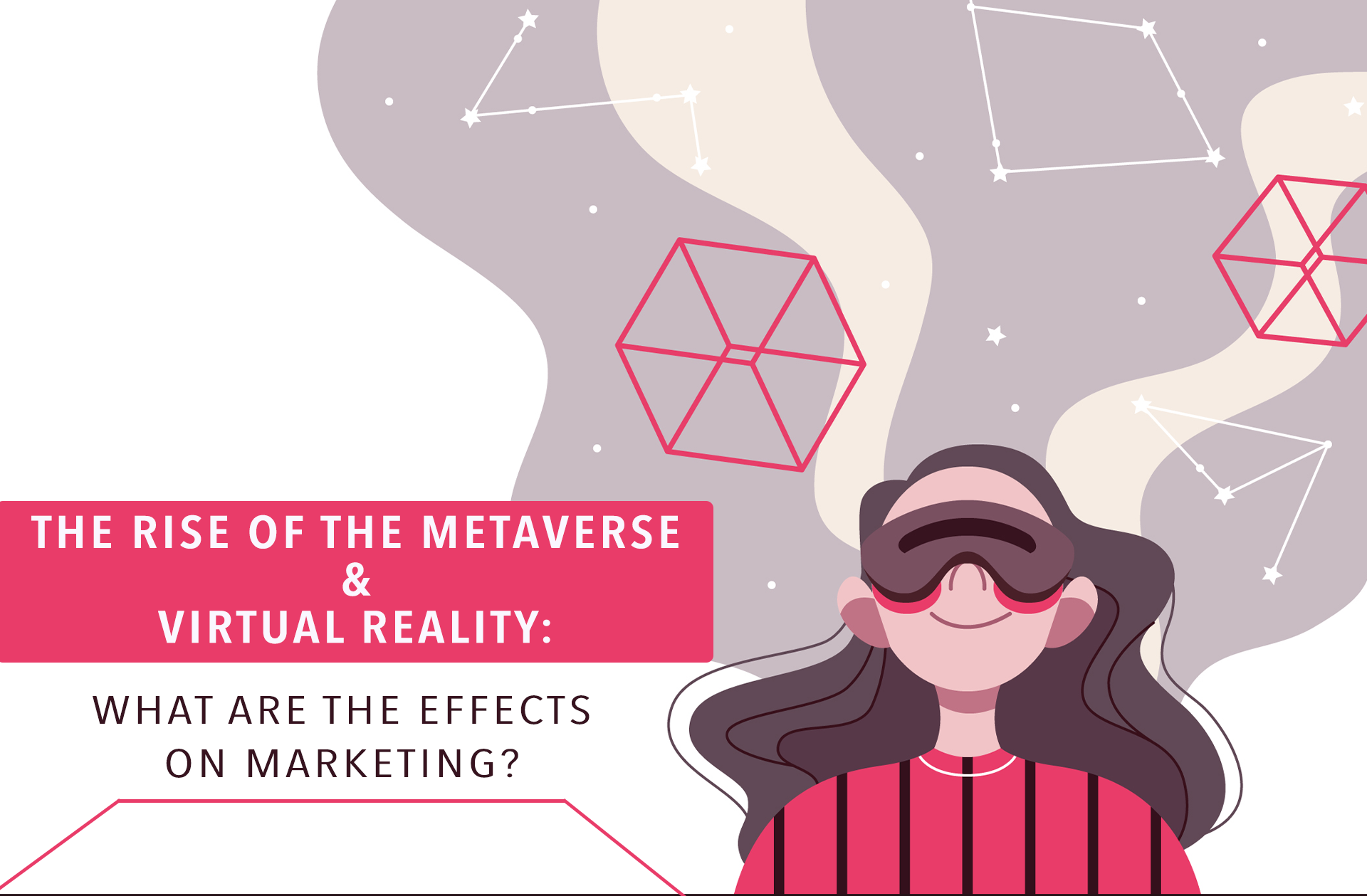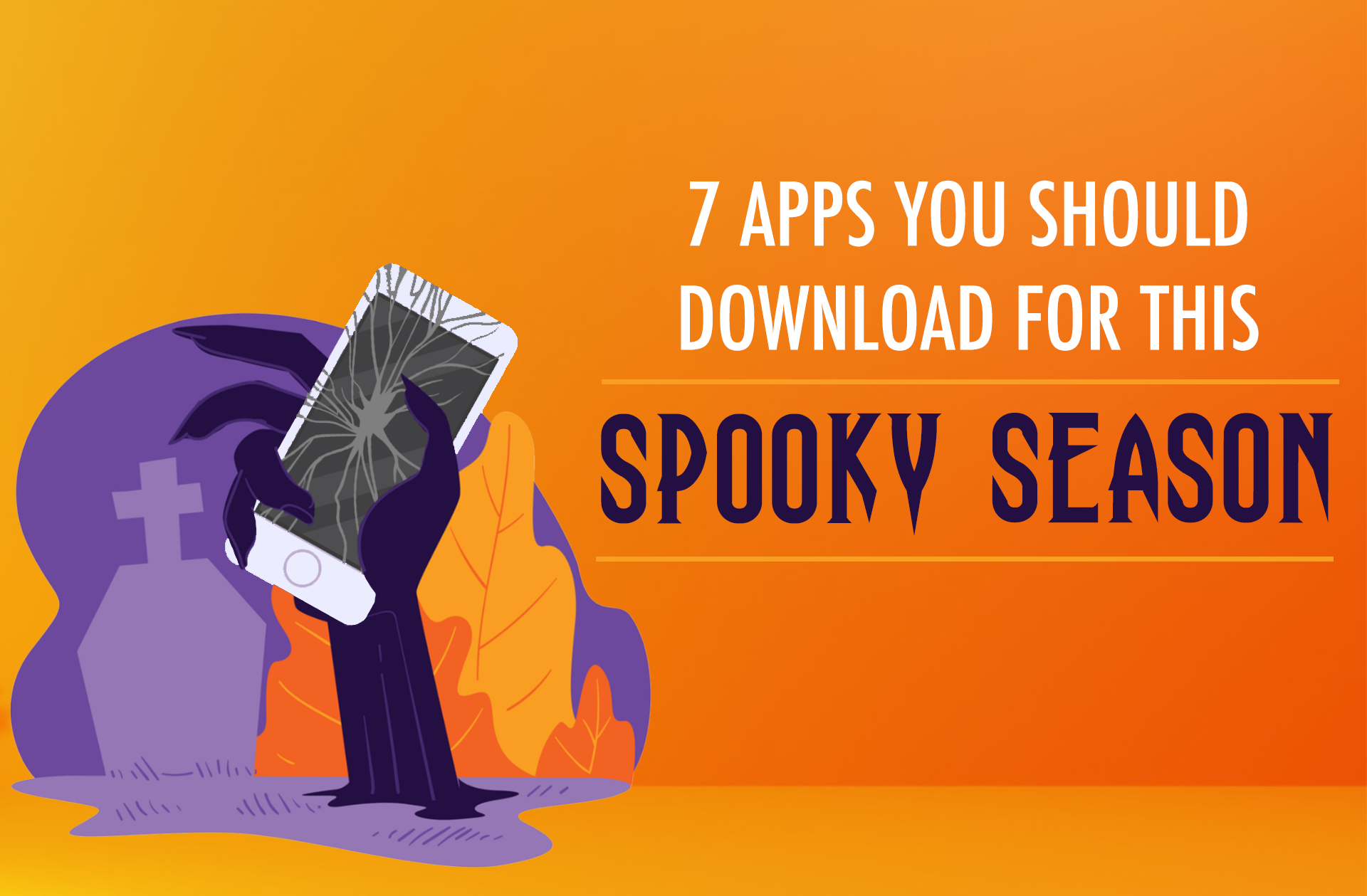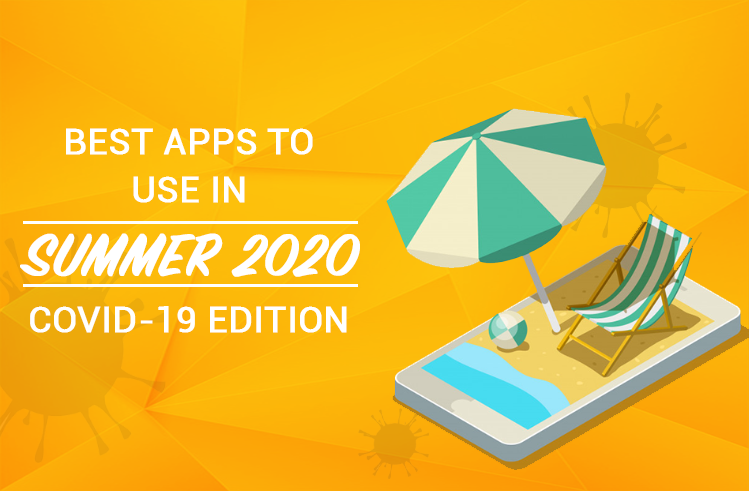We are in a new world in the blink of an eye! The entire world has come to a grinding halt due to the COVID-19 crisis. We are beginning to realize the magnitude of the coronavirus pandemic, and the anxiety still remains as to when it will all end. It is disrupting millions and probably even billions of lives across the globe. The sheer scale of disruption is difficult to quantify, and the effects of the pandemic, both immediate and long-term, are still playing out.
There’s no doubt that the crisis caused by this pandemic has created an incredibly tough business climate. Businesses are being presented with many new challenges as international borders close, and bricks-and-mortar businesses shut their doors. More than 2.9 billion people — one-third of the global population — are currently under lockdown orders. And according to the UN, 81% of the world’s workforce has had their workplace wholly or partly closed, with staff facing months of financial uncertainty and worry.
For the businesses that remain active at this time, questions are inevitably being asked about how best to cope with the prevailing conditions, and how best their strategies should adapt. With all now looking in one direction, toward their screens, for their last and only connection beyond the 4 walls, the online world has completely transformed. As a mobile marketer, this phenomenon comes unprecedented, where consumer behavior has been forced to immediately change, and change on a massive scale. Those in isolation or under lockdown can’t perform their usual routines or are restricted from the outside world, which has led to an impact on mobile user outlook, perceptions, and, ultimately, behaviors.
Mobile User Behaviour
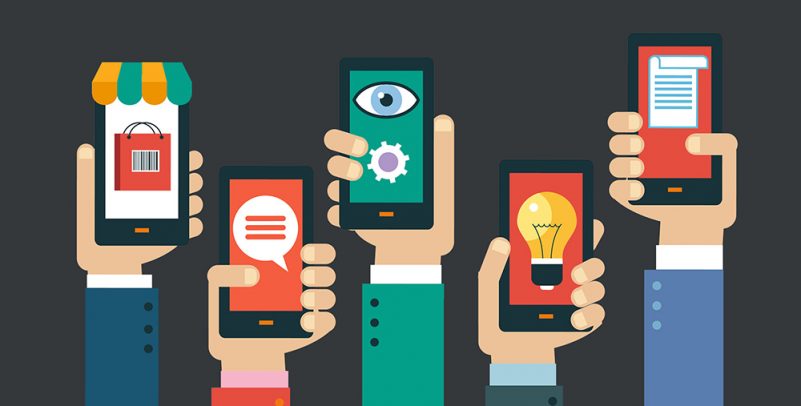
Source: Digital Main Street
Time Spent On Mobile Is Rising
It is almost self-explanatory as to why the time spent on mobile has increased. We’ve seen the impact of coronavirus manifest in phases. As new outbreaks emerge, governments and businesses are responding with containment measures. China was the first wave, followed by Italy, Japan, and South Korea, then France and Germany, and now we are starting to see indications of the impact on the mobile economy in the US, UK, and everywhere in the world. People are turning to mobile during this time – to seek information, continue working, be entertained, foster connection, and fill the gaps of regular life – as they are encouraged or required to stay home.
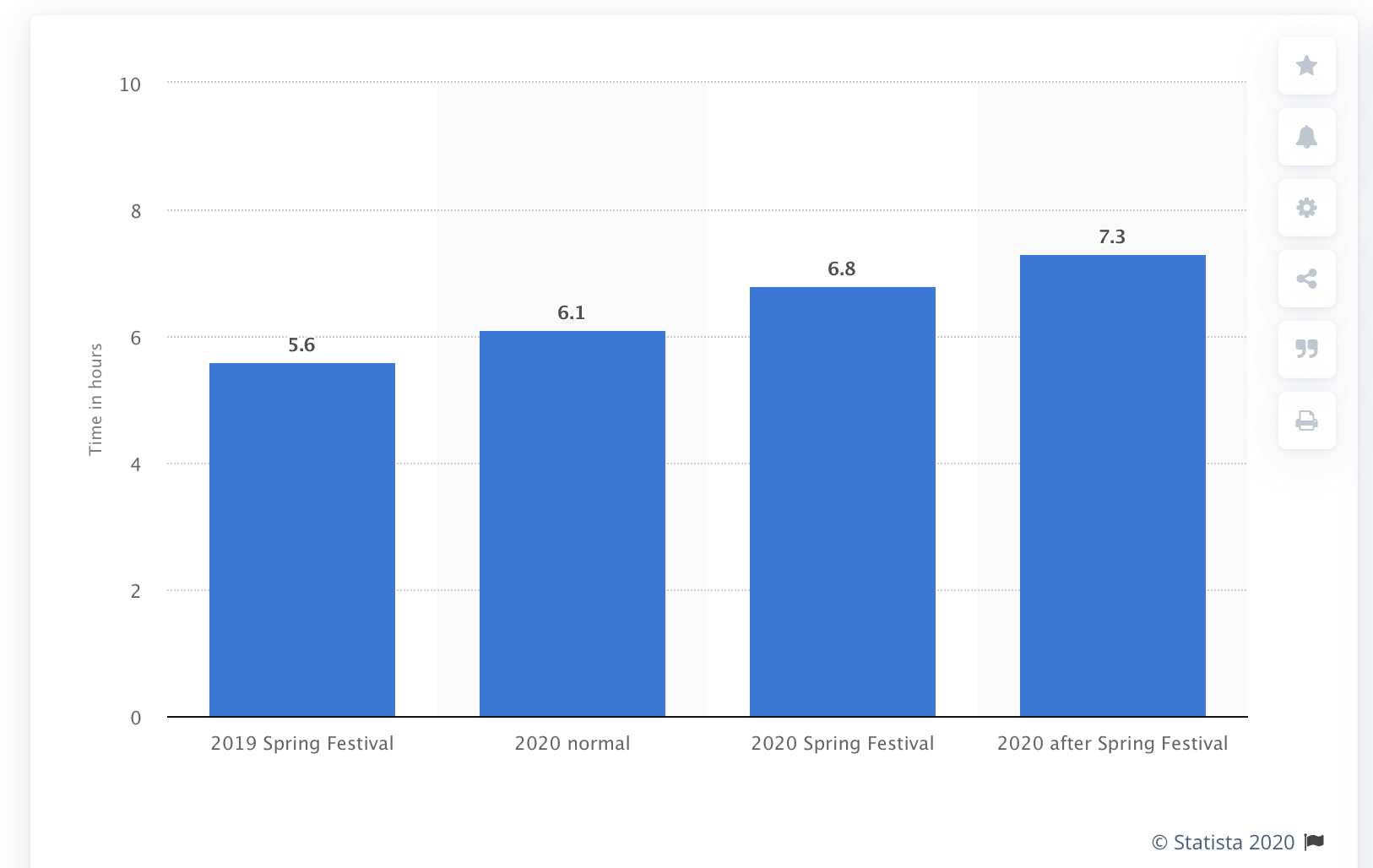
Source: Statista
In China, city lockdowns began in January 2020. Consequently, we saw daily time spent in mobile in China jump to an average of 7.3 hours per day per user, an increase of 30% compared to the average for 2019. Italy, the country with the second-highest concentration of confirmed cases as of March 15, saw the second-highest jump at 11%. The mobile phone has become a one-stop-shop or should we say one-stop-world.

Source: Open Signal
It was also recorded that data usage was up since lockdown. With many users using apps to host video conferences, and with overall media consumption on the rise, the greater data usage has resulted in congestion causing speeds to fall. Within Asia, we can see that from late Feb onwards, the weekly median rate has been reducing. This is directly related to the number of times users are spending on their devices.
Thus, firstly it is paramount that every business finds its way onto mobile. It is only logical to adapt a mobile first strategy, or at least a display strategy. If you want your users to be able to stay connected with you and even remember your business after the pandemic fades out, interacting on mobile or display is the only path for you. Furthermore, as mentioned, it is relevant to remember that whatever content you put out or whichever medium/channel you use, it should be quick to load. Speed will always be an important factor to the amount of attention given to it. If it takes too long to load, users will abandon it.
Attention Span Is Lesser
We’re bombarded by distractions every day. Whether a notification on our phones, a ping on our desktops, or vibration on our Apple watches—there are endless distractions that shift our daily routines. These quick, simultaneous behaviors are what has formed, what we call, the Impulse Generation. In the Impulse Generation, age is not the principal factor. Instead, the focus is on the similar behaviors we all share: our dependency on the web and mobile devices for fast, easy access to information.
It’s just as you suspected; the information age has changed the general attention span. A recently published study from researchers at the Technical University of Denmark suggests the collective global attention span is narrowing due to the amount of information that is presented to the public. In fact, a study by Microsoft concluded that the human attention span has dropped to eight seconds – shrinking nearly 25% in just a few years.
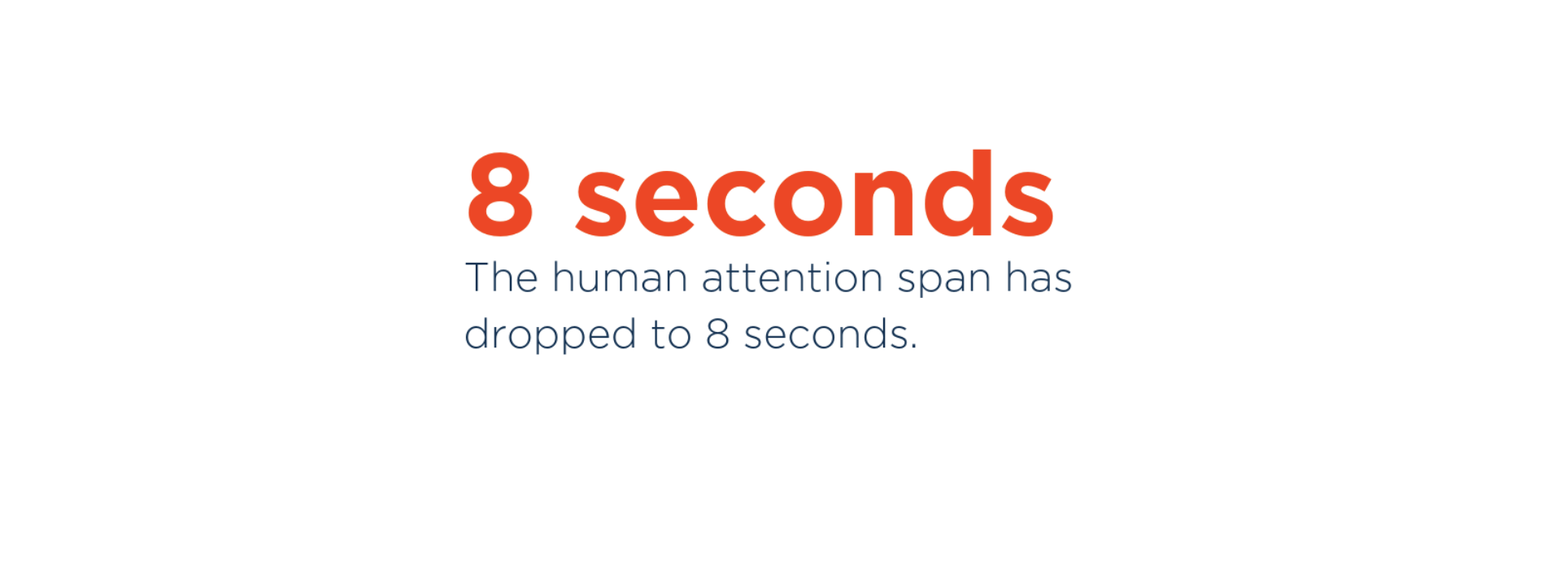 With lockdown in order, it’s no surprise that people are consuming vast amounts of media. Global Web Index found that over 80% of consumers in the US and UK say they consume more content since the outbreak, with online videos (YouTube, TikTok) being the primary mediums. With an overload of content available, the attention span of mobile users is at an all-time low.
With lockdown in order, it’s no surprise that people are consuming vast amounts of media. Global Web Index found that over 80% of consumers in the US and UK say they consume more content since the outbreak, with online videos (YouTube, TikTok) being the primary mediums. With an overload of content available, the attention span of mobile users is at an all-time low.
First and foremost, creating engaging content is a must (more on this later). Subsequently, you have to ensure that it’s short and to the point. It needs to be snackable, so that viewers are able to quickly understand it, without having to scroll through text, or skip forward in a video. To achieve this type of user-friendly content, split up your messages with smaller paragraphs, statistics, quotes, etc. Another way is through shorter social stories, rather than longer web pages. While long-form content is necessary to establish thought leadership, it’s important to break down those messages into shorter snippets on social media platforms (check out our LinkedIn/Facebook/Instagram/Twitter for the stackable version of this very article!) By shortening your content and creating a more skimmable experience, you will retain your audience’s attention longer.
Applications Are Everything
For those slow to embrace mobile apps, the coronavirus pandemic may be what ultimately pushes these consumers toward their use. More than three-fourths of consumers (77%) are turning to apps to order groceries, food, and other products and services during the coronavirus pandemic, according to a survey done by a location technology company, Bluedot. Though some are experienced app users leaning on technology more heavily than before, while others are exploring for the first time, the majority is recognizing how mobile apps can be beneficial during a pandemic.
With most working professionals working from home and students attending classes from home online, we have suddenly become reliant on services that allow us to connect and learn from home. School assignments are being handed out on Google Classroom, and meetings are happening on Zoom, Google Hangouts, and Microsoft Teams. The increase in usage can be easily seen –
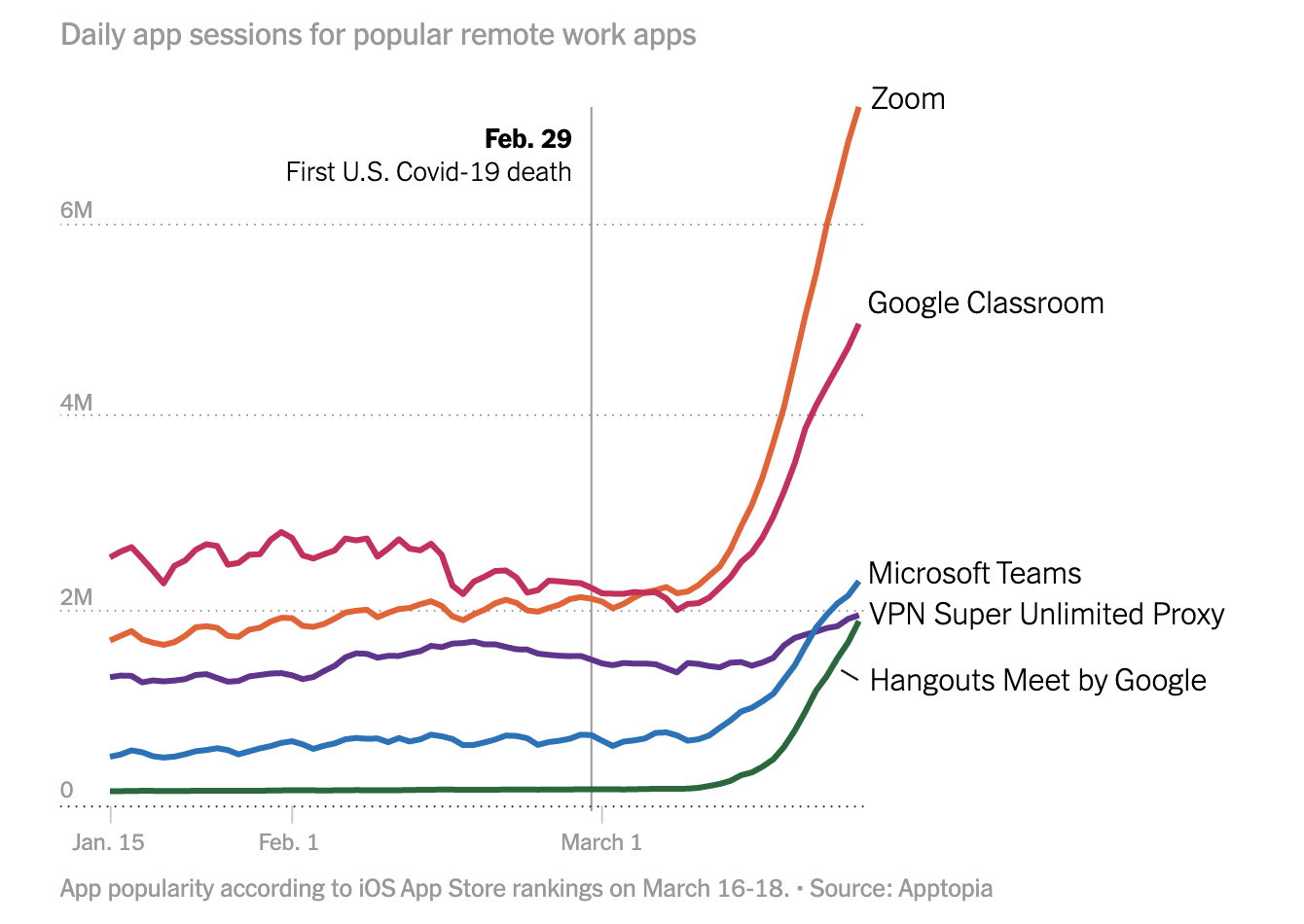
Source: Branch
With no means of entertainment outside the house, we have all resorted to apps like Netflix and Amazon Prime for streaming services and various video games to keep us busy in our extra time. The need for connecting with family and friends has also increased and can be reflected in the upheaval in apps such as Houseparty, Nextdoor, FaceTime, Netflix Party, and many more.
With health being the primary concern, everyone has turned to health and fitness apps to keep themselves fit and healthy at home. Delivery apps have also risen inactivity as supermarkets and restaurants have been shut. Billions of people have taken to social media platforms, messaging apps, and news apps to keep themselves informed and connected.
Overall, the app market has seen nothing short of a phenomenon as mobile app session times and installs see dramatic increases in the first quarter compared to a year ago.
If you are contemplating whether your services, can be integrated into an app, then do not think twice, just do so. Especially at this time, it only makes sense to have a mobile application. As most people are confined, your users will resort to using applications to get in touch with your service. All you have to do is make sure that the user interface is simple and visually appealing. You can also use in-app engagement techniques and push notifications to bridge the isolation gap with your users. If your services cannot be translated into an app, then make sure that you are active on all social media apps and find various ways to stay connected to your users to ensure maximum engagement.
Users Are Emotional
At these trying times, it is only standard for everyone to be emotional. Some are severely impacted by the disease, either by getting sick themselves or having a relative getting sick. Others are anxious and worried about their health and preoccupied with their jobs and financial situations — many have lost their jobs during this pandemic, businesses are shutting down, and the way people spend is changing significantly over these few months. The lucky ones that don’t get impacted directly are either lonely or confined because they are forced to maintain physical distance from their friends, loved ones and family, making them stressed and overwhelmed as a result of this new situation. For example, many parents now have to work while caring for their children who are at home.
While this might be a time when some take advantage of fear and desperation by hoarding resources, trying to profit and beyond, companies who put the long term benefit of their users beyond their short term gain will be most likely to survive and grow in this environment. Adapting to this new order psyche, will make users appreciate you and even continue using your services post-pandemic. For example, many premium yoga and fitness apps are offering free subscriptions at this times to ensure that all have to access to stay healthy. One such app is Nike Training Club –
Source: Nike Training Club
This will definitely encourage users to continue using this app, even after paid premium subscriptions are back. This approach is a great way to acquire new users and retain them.
Type Of Content Consumed
With everyone pretty much sitting on the edge about this pandemic, the most widely consumed content is inevitably about Coronavirus. Either be it articles, blogs, or news sources, all updates about Coronavirus is in the limelight. People have also taken to news bots on messaging apps to receive daily updates on the situation. An exciting emergence is of social media platforms being a key dispatcher of important information. News channels have started reaching out to their audience through Instagram, and even curated content about this pandemic is gaining traction.
Just real, old, relatable content is also being consumed by users in lockdown. Articles talking about ways to adapt to this new standard posts humoring this current situation or even funny videos about daily lives in isolation are becoming popular. Challenges on social media featuring hashtags such as #stayathomechallenge, #safehands, and many more, are what that have been keeping boredom at bay.

Source: Express
Another aspect of content that is being heavily consumed is videos. Videos have always been the type of content that was massively consumed. However, now that everyone is at home and has more time in their hands, the consumption of videos has increased by 50%. The videos can be of any nature – entertaining or informational. TikTok is one platform that has benefitted from this pandemic through its mass production of short 15 seconds, snackable (remember from above?) videos. Other platforms such as Youtube and Instagram have also seen an increase in video consumption.
Once you have figured out a way to connect back to your users in this pandemic, it is important to focus on your content creation strategy. Whether you are offering a service that users can use during the lockdown or cannot, creating extra content will be extremely helpful in keeping your users engaged. It is next to mandatory now for all brands to be present on social media platforms and create engaging content that is relatable to the situation right now – jump in on trends, create entertaining or informational videos, put out content with compelling visuals and personalise the experience by keeping in mind the users’ psyche.
Mobile Is The Outside World
We are adapting, we are becoming stronger and learning to endure in the face of adversity. Keeping in mind that the outside world is nearly shut, users will turn to their mobiles. Their behavior should be the driving fundamental of your new adaptive strategy for your business in this pandemic. Changed in behavior automatically means that there needs to be a change in the way you engage your users. Thus, with this information now at hand, we hope that you will be able to create and maintain mobile user relationships, by pushing your users to channels where you can build stronger connections through personalized and relatable content. In these uncertain times, there are still opportunities; it just takes a slightly different mindset and approach and a positive attitude. With that, we hope you stay safe and healthy.
If you wish to receive these articles directly to your inbox, subscribe to Minimob’s very own #mininewsletter!



